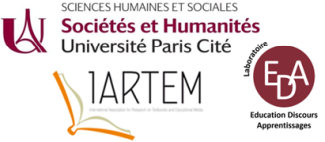Research problem and research question - The UN Agenda 2030 urges States to implement equitable and inclusive education. Inclusive learning is based on adapting times, spaces, strategies and materials. Among the latter elements, the school manual is a primary tool for sharing knowledge and encouraging moments of participation and interdependent cooperation between students. Furthermore, this teaching aid is configured as a cornerstone of home study moments. It constitutes a solid basis for learning content and personal reinterpretation of what has been learned. The problem of accessibility of the school manual is broad, and it concerns many students. The Italian Dyslexia Association, in partnership with the Italian Publishers Association, also implements, based on a specific request from the parents of the students, adjustments to the school book to make it compatible with the compensatory tools certified in the Personalized Educational Project in Italy called PDP. The phenomenon becomes wider by considering the needs of pupils with autism spectrum disorder, some of whom have good reading skills but do not understand the text if there is no adequate iconographic equipment to clarify the abstraction of the language. Moreover, some students of foreign origin also experience difficulties understanding texts due to a linguistic disadvantage not appropriately supported by visual aids and glosses. Furthermore, the same need emerges in the support of students with hearing disabilities who require accurate subtitling, unambiguous images and transcriptions of audio tracks. In light of these training needs, it is necessary to understand if there are different levels of inclusiveness between the various editorial products and, in addition, what tools could guide teachers in selecting the most suitable and accessible textbooks.
Explanation of method – The Action Research was chosen because it is configured as one methodology able to resolve factual issues. Therefore, it is an empirical research strategy that requires the investigation to be conducted in the field, structured and based on close collaboration between researchers and teachers with the aim of provoking improvements.
Therefore, using the A-R methodology, two easy-to-use tools have been designed, one for "blended" schoolbooks (paper with digital expansions) and the other for e-books. The planned research process was divided into five different and complementary moments, as follows:
• phase 1: writing of questionnaires for two exploratory surveys;
• phase 2: exploratory investigations: data collection and analysis;
• phase 3: designing of analysis tools based on data analysed;
• phase 4: pilot test and tools implementation;
• phase 5: dissemination of analysis tools in a natural context.
The fundamental objective of the first survey was to investigate teachers' perceptions in relation to “blended” books. The second investigation, however, aimed to understand the characteristics that make an e-book accessible and usable. Responses were collected using an online form consisting of multiple-choice questions and five-point Likert scale questions. Teachers were recruited voluntarily through a snowball sampling method. 200 teachers from all over Italy participated in the first survey and 100 in the second one.
Some of the questions asked to the teachers are the following:
1) do dyslexia-friendly fonts make texts easy to read for everyone?
2) are pair working and cooperative learning key methods in schoolbooks?
3) are digital and interactive exercises easy to use for all the students of the class?
Data analysis – Two analysis checklists were designed from the surveys described above. These tools were designed with 15 items respectively and the score was calculated in thirtieths. The presence of a characteristic has a value of 2 points, the absence 0 points, while the partial presence has a single point. A school manual that obtains less than 18/30ths would not adequately support all students' learning if teachers did not carefully adapt and remodel it. During the 2022-23 school year, 131 answers were collected: 48 mixed books and 3 e-books achieved a positive rating.
Dissemination and results- Through the "Test your Text" campaign, the analysis tools were disseminated among the school community to make them available for decision-making processes. The evaluation grids were extended to teachers of all school levels and grades.
90% of e-books and 55% of mixed textbooks have been considered by teachers as not properly accessible and usable. Teachers of all orders and grades reported critical issues concerning the following characteristics:
1. absence of highly readable fonts;
2. poor comprehensibility and accessibility of the videos;
3. absence of audio-reading tools;
4. difficulty in using digital exercises;
5. poor promotion of peer tutoring and cooperative learning.
To better understand the phenomenon, new research will be carried out. Understanding the features of current texts could be functional for the school community and publishers. From an inclusive perspective, it is necessary to think of new answers to put all students in conditions to achieve their own educational success. A further dissemination process will be carried out in 2024 through conferences, papers and social media.
References
Meo, D., & D'Alonzo, L. (2022). Libri scolastici e inclusione. In F. Batini, G. Agrusti, I. Vannini, F. Falcinelli, R. Salvato (Eds.), La ricerca educativa per la formazione insegnanti: Proceedings of Perugia University conference, (p. 163). Perugia: Pensa Multimedia;
Meo, D., & D'Alonzo, L. (2022). Il potenziale inclusivo del libro di testo: una ricerca-azione, RicercAzione, Vol. 15, n. 1, (pp. 255-265). Rovereto: Iprase;
Meo, D., Landoni, M., & D'Alonzo, L. (2022). Towards an inclusive learning experience: Proposing a checklist to assess digital textbooks. In D. Parmigiani & M. K. Murray (Eds.), Teaching & Learning for an Inclusive, Interconnected World: Proceedings of ATEE/IDD/GCTE conference, (pp. 241-253). Sestri Levante (Italy): Association for Teacher Education in Europe.
UN (2006). Convention on the Rights of Persons with Disabilities (CRPD). https://www.un.org/disabilities/documents/convention/convoptprot-e.pdf [ 31.01.24].
UN (2022). Transforming Our World: The 2030 Agenda For Sustainable Development. https://sdgs.un.org/sites/default/files/publications/21252030%20Agenda%20for%20Sustainable%20Development%20web.pdf [ 31.01.24].
- Poster

 PDF version
PDF version

